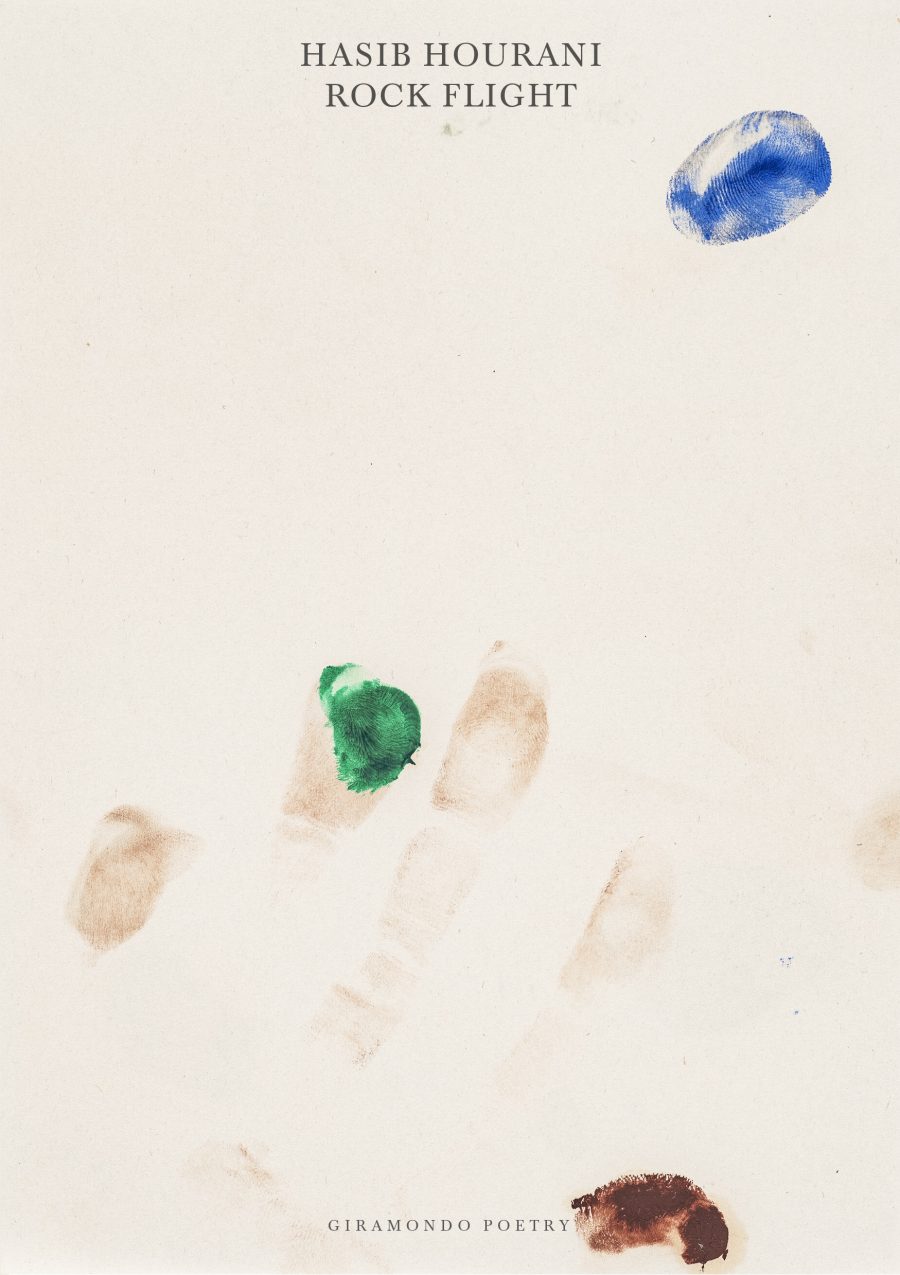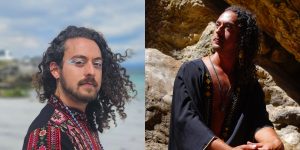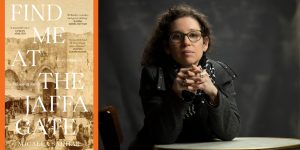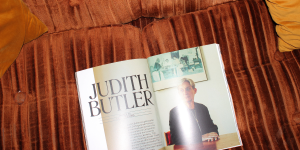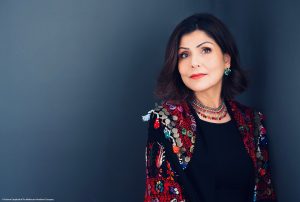Archer Asks: Hasib Hourani on Palestinian liberation and poetry politics
By: Alex Creece

Hasib Hourani is a Lebanese-Palestinian writer, editor, arts worker and educator living on Wangal Country in Sydney. His work has been published in Meanjin, Overland, Australian Poetry and Cordite, among others. He is a 2020 recipient of The Wheeler Centre’s Next Chapter Scheme and his 2021 essay, ‘when we blink’ was shortlisted for The LIMINAL & Pantera Press Nonfiction prize and published in their 2022 anthology, Against Disappearance.
His debut book is rock flight (Giramondo 2024).
For this interview, Hasib spoke to Alex Creece, online editor of Archer Magazine.
Image: Cover of rock flight, next to photo of Hasib Hourani by Leah Jing McIntosh.
Archer Magazine: Hi Hasib, thank you so much for chatting with us about your debut poetry collection, rock flight. The poetry in this book is phenomenal, and I’m super keen to hear more about it. So, to begin: can you tell us about how this collection started?
Hasib Hourani: I started writing rock flight in the beginning of 2020. It was originally just a one- or two-page poem but I realised, after letting myself sprawl across those couple pages, that I wasn’t done writing. So the poem gained more lines, and then more pages.
I reached out to a peer who, back then, was working at the same literary magazine as I was, asking what she thought I should do with the work. I could either split it into shorter poems and publish each in a different magazine; publish the ~300 lines as a chapbook; or keep writing towards a full length publication.
I was open to all three options, and only realised that it was in fact a book once I’d been awarded a fellowship that treated and honoured it as such. That was four years ago now, and it’s been a rigorous process of writing and editing with a lot of important negative space in between.
AM: rock flight is a heartbreakingly urgent book, especially against the backdrop of Israel’s ongoing and escalating genocide against Palestinians. Can you speak to the power of poetry as a means of resisting oppressive, colonial systems? What role does poetry play, here in this moment?
HH: The main conceit of the book was actually my disappointment in how language was being used in self-identified leftist spaces, particularly in the arts.
While still completing my liberal arts degree, I kept rubbing up against zionists — students, teachers and miscellaneous acquaintances — every one of whom considered themselves some sort of ‘progressive’.
I know that poetry is political. I know also that it’s inseparable from action. Gazan poet Mu’in Bseiso, for example, was arrested in 1955 and again in 1959 for leading demonstrations. And more recently, Refaat al-Areer famously penned If I must die before his murder in December 2023.
But I was meeting artists with explicit ties (financial, familial or social) to the zionist entity who were producing work about ‘good vibes’. It was deranged.
rock flight is ultimately a poetry book about explicit acts of resistance, with boycott at the centre, so it was my answer to that dissonance.
While I’ve now managed to distance myself from those spaces, I still hope the book finds itself in the hands of those false progressives, and serves as a tool for their negotiation with justice.
AM: I’m interested in the title of the book: rock flight. Both rocks and flying are strong motifs throughout the collection. Can you speak to the significance of the imagery in your book?
HH: The book is one long call to action, and I wanted to make sure that the title matched that objective.
Explicitly, ‘rock flight’ refers to the decades-long use of rocks and slings as a weapon of resistance in Palestine. But a rock is also rubble. Or a tool for rebuilding. It’s about land and landscape. Rocks, in critical mass, make a mountain, which is not only a central image in the book, but also the origin of my surname, Hourani.
Flight of course is a nod to the forced and constant migration of Palestinians both within Palestine and globally.
rock flight is rife with imagery — not uncommon for poetry, I know — but what feels special and important is how the images all exist symbiotically. I can’t dislodge rocks from flight from birds from boxes from mountains from weight. It’s all the same matter in my mind.
AM: Can you tell us about your use of formatting, different poetic techniques and the page as a space in flux? I’m interested in how this may relate to the idea of borders and migration. From your afterword:
once palestine is free, we will fold our flags and place them back in the cupboard. Like old scars the borders will flatten. a ferry docks in beirut. a shuttle will park in amman. there’s a minivan company and all the drivers are friendly. my brother-in-law fantasises one hundred years after our liberation, he sees a bullet train.
Would you like to speak more to this?
HH: I love this part of the afterword and I’m glad you chose to highlight it.
I actually don’t have too much to say about your question, though, perhaps besides the fact that Palestinian liberation is not isolated to the landmass of Palestine.
And so to your note on borders and migration, I didn’t want the reader‘s vision for our future to end with the right of return, because that’s actually not our final objective.
The text you pulled is the last paragraph of the book, and it felt critical that I end on the notions of both liberation and unification across the region, because that’s the long term goal that we’re working towards here, and that involves everyone.
AM: In rock flight, there are several “HOW TO…” poems – can you share your inspiration/process for creating these?
HH: Referring back to my answer to that second question, it was important that rock flight didn’t exist as text isolated from action.
The ‘how to’ sections, as well as other rhetorical devices, were an integral part of the book right from the start. The first version was only a page long, and already included those multiple choice questions, for example.
It was also originally all written in the second person and that obviously changed pretty early on, but I was certain from the start that I wanted the poem to be as embodied as possible, and as tactile as possible, to motivate the reader to act.
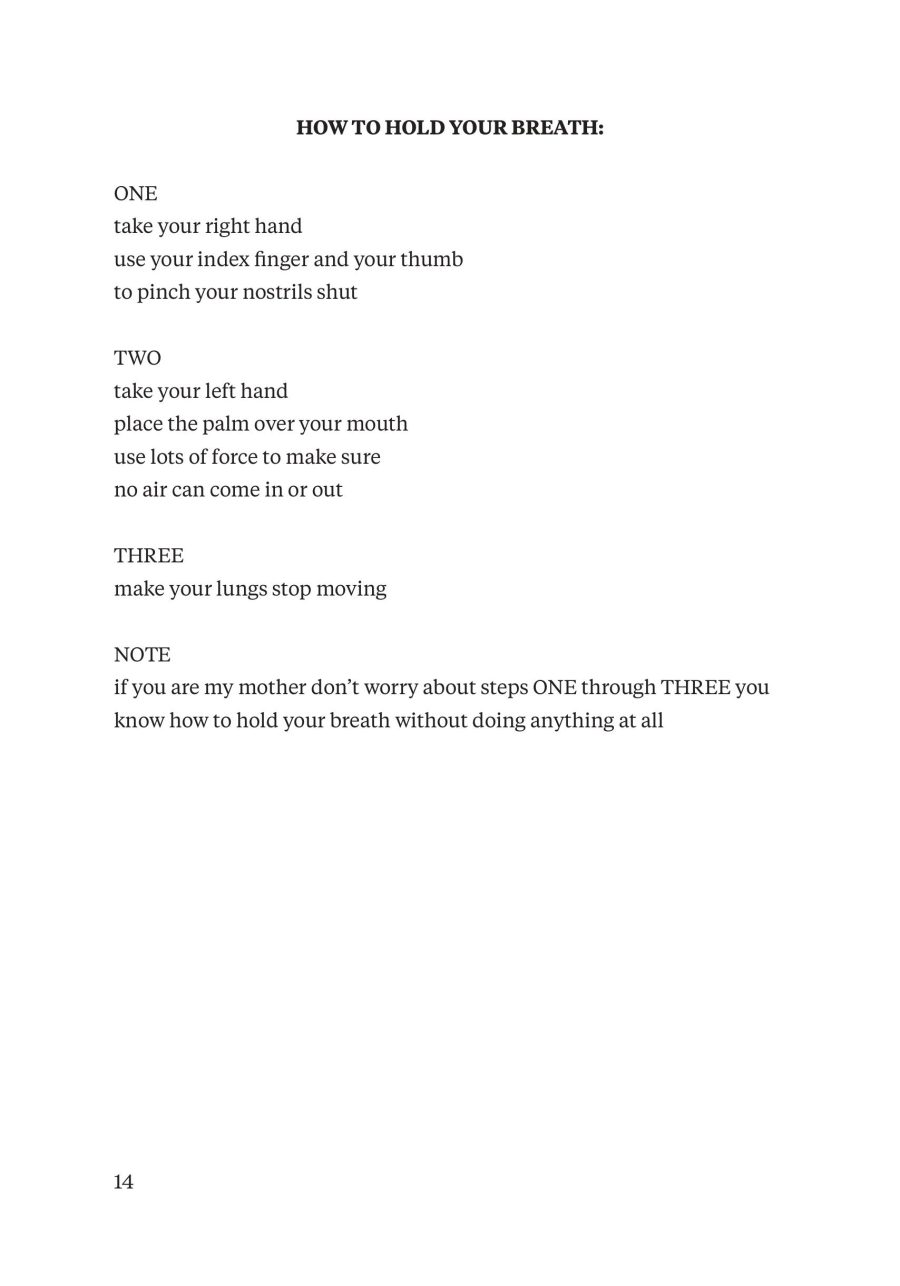
HOW TO HOLD YOUR BREATH from ‘rock flight’ by Hasib Hourani
AM: What do you hope readers take away from the book? What impact do you want it to have on both Palestinian readers and non-Palestinian readers?
HH: I organised the chapters of rock flight to create a somewhat linear arc that starts with motion and ends with the right of return.
Arranged between those pillars are notions of breakdown, interrogation and entrapment. I hope readers submit to going on that journey with me. I hope they learn something either about poetry or about Palestine, if not both.
AM: Who are some writers, speakers or thinkers who inspire you? For our readers who might not be familiar with all of the history and context of Palestine, can you recommend any resources to support their learning?
HH: Lebanese-American artist and writer Etel Adnan is a huge inspiration to me. The way she uses her own invented hieroglyphs in The Arab Apocalypse rewired the way I conceptualise language.
I first read it years before I started writing rock flight but came back to it a few times. I read a lot of her writing while working on the book, and was inspired, too, by her visual art.
For texts on Palestine, this article published in Mondoweiss is paramount to understanding our resistance fighters in Palestine.
The anthology The Case for Sanctions Against Israel is a fantastic collection, and specifically includes an essay titled ‘The Brain of the Monster’ by Nada Elia, which explains and justifies academic and cultural boycott.
There are a lot of people from my time at university who I wish would read that essay.
Order rock flight by Hasib Hourani on the Giramondo website.


